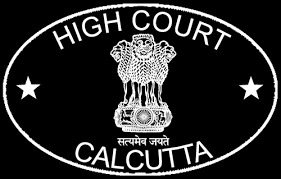Siddharth Mridul, J.@mdashThis appeal u/s 260A of the Income Tax-Act, 1961 (hereinafter referred to as "the Act") is directed against the order dated 28-4-2006, passed by the Income Tax Appellate Tribunal in IT(SS) No. 313/D/1997 pertaining to the block period 1-4-1986 to 29-8-1996. The appellant/Revenue is aggrieved by the fact that the Tribunal held the block assessment order to be barred by limitation and, therefore, quashed the same.
2. The facts of the case are that search u/s 132(1) of the Act was conducted on 29-8-1996 which concluded on 30-8-1996. A panchnama was drawn on 29-8-1996 when books of account and other documents were seized. On that date a restraint order was passed. By another order passed on 28-10-1996 the restraint order was extended till 18-11-1996. On 18-11-1996 a panchnama was drawn and nothing further was seized from the premises of the assessee. By the order dated 18-11-1996 the restraint placed vide order u/s 132(3) of the Act dated the 18-10-1996 on a steel almirah was vacated.
3. The case of the revenue is that since the last panchnama was drawn on the 18-11-1996, the search was concluded on that date. The assessee had submitted that the search having been conducted on the 29-8-1996/ 30-8-1996, the assessment made on 28-11-1997, was barred by limitation in view of the provisions contained in section 158BE(1)(a) of the Act. In other words, the assessment order has been passed beyond the period of one year from the end of the month in which the last authorization for search u/s 132 of the Act had been executed and, therefore, the assessment made u/s 158BC deserves to be vacated.
4. The Tribunal noticed that the search must be considered to have been completed on the date of the last panchnama drawn when certain seizure was affected. The Tribunal further noted that the restraint order issued u/s 132(3) of the Act does not amount to seizure. In order to search the premises again, in accordance with the provisions of section 132(1) of the Act, the authority to initiate the search must have firm belief that some income remained undisclosed, that was represented by books of account, money, bullion etc. and issue an authorization for search. This was not done. Further, the officials who visited the premises on various dates, after gaps and after repeated action of lifting and reimposing the restraint order, did not feel any necessity for seizing any files. The Tribunal observed that, therefore, the last authorization was executed on the date when the search party left the premises of the assessee, after seizing those items considered to be related to the undisclosed income of the assessee. The assessment was to be completed within one year from the end of the month of that date. The Tribunal found that in the instant case the search was completed on 30-8-1996 and the panchnama was drawn on 29-8-1996 when books of accounts were seized. The restraint order placed on an almirah was passed on 30-8-1996 which was extended further till 18-11-1996 by an order passed on 18-10-1996. The Tribunal found that on 18-11-1996 another panchnama was drawn when nothing was seized and the restraint order was vacated. The Tribunal held that in the circumstances, for all practical purposes, the search concluded on 29-8-1996/30-8-1996 when the panchnama was drawn in execution of the warrant to search u/s 132(1) of the Act and the necessary seizure was made. The Tribunal also held that after that the revenue has not done anything tangible on 18-10-1996 and 18-11-1996 to demonstrate that the search was still in progress. Hence, the Tribunal came to the conclusion that the last authorization was executed on 29-8-1996, and the one year time limit for framing the block assessment started from the end of the month, i.e., 31-8-1996 and ended on 31-8-1997. Accordingly, the Tribunal held that the block period assessment framed on the 28-11-1997 was barred by limitation and was, therefore, bad in the eyes of law. The Tribunal accordingly quashed the same.
5. In
This discussion leads us to the question--Was the panchnama of 3-1-2001, of the type mentioned in the said Explanation 2(a) ? From the facts narrated above, it is clear that the panchnama of 3-1-2001, itself reveals that nothing was seized on that date. Nor was anything found on that date. In fact, no search was conducted. The jewellery that was put in the cash box of the almirah had already been searched, found, inventorised and valued by the DVO on 17-1-2000, itself. Nothing remained to be searched thereafter. And, in fact, no further search was conducted after 17-11-2000. Obviously, nothing else could be found. All that was done on 3-1-2001, in the presence of the witnesses (panchas), was that the seals were removed from the cash box and the almirah and the keys were handed back to the assessee. Essentially, the revocation of the restraint order was given effect to. This is exactly what the Tribunal found as a fact and meant when it concluded that the panchnama dated 3-1-2001, was merely a release order and could not extend the period of limitation.
6. In the present case, it is obvious that the search started on the 28-8-1996 and continued till 30-8-1996, during which period various articles and documents were seized. On 30-8-1996 a restraint order was passed with regard to an almirah that had been sealed. Nothing remained to be searched thereafter. The restraint order passed on 30-8-1996 was extended on 18-10-1996 till 18-11-1996, when the last panchnama was drawn up. On 18-11-1996 the restraint order was vacated. Therefore, essentially from 30-8-1996 when the panchnama was drawn and the restraint order passed, till 18-11-1996 when the last panchnama was drawn and the restraint order vacated, nothing else was found and in fact no further search was conducted. Therefore, the last panchnama dated the 18-11-1996 was merely a release order and could not extend the period of limitation, as found by the Tribunal.
7. In view of the foregoing discussion, we agree with the learned counsel for the respondent/assessee that the impugned order does not call for any interference on our part and that no substantial question of law arises for our consideration.
8. The appeal is dismissed.

